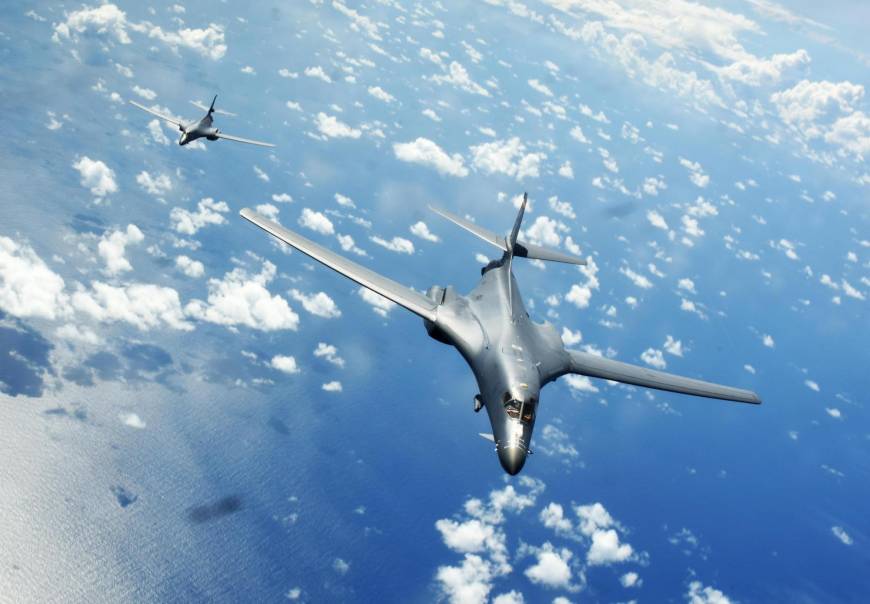BY JESSE JOHNSON

Two U.S. Air Force B-1B Lancers fly a 10-hour mission from Andersen Air Force Base in Guam through the South China Sea on Thursday.
Two U.S. Air Force B-1B bombers flew a 10-hour mission Thursday from Guam through the disputed South China Sea in an operation with a Navy guided-missile destroyer, the U.S. military said.
The joint training, organized under the U.S. Pacific Command’s “continuous bomber presence” program in Guam, was aimed at bolstering interoperability between the Navy and Air Force “by refining joint tactics, techniques and procedures while simultaneously strengthening their ability to seamlessly integrate their operations,” according to a statement by the U.S. Pacific Air Forces.
China has also ramped up its naval and air operations in the strategic waters of the South China Sea, sending bombers and fighter jets on “combat patrols” that Beijing has called a “regular practice.”
The Pentagon said this week in its annual report on China’s military that Beijing was constructing 24 fighter-sized hangars, fixed-weapons positions and other military-grade infrastructure on each of the three major features it occupied in the South China Sea as of late last year.
“China’s Spratly Islands outpost expansion effort is currently focused on building out the land-based capabilities of its three largest outposts — Fiery Cross, Subi and Mischief Reefs — after completion of its four smaller outposts early in 2016,” the report to Congress said.
“Once all these facilities are complete, China will have the capacity to house up to three regiments of fighters in the Spratly Islands” in the strategic waterway.
China claims virtually the entire South China Sea, through which more than $5 trillion in annual trade passes.
Last month, Washington twice complained of “unsafe” encounters between U.S. reconnaissance planes and Chinese fighter jets in the skies above the waters.
The U.S. has also recently sent the B-1B to the Korean Peninsula and surrounding area for joint exercises with the South Korean military and Japanese Self-Defense Forces as part of a warning to nuclear-armed North Korea over its recent provocations, including a spate of missile tests.
Originally developed to carry atomic weapons, the bomber — converted to its exclusively conventional combat role in the mid-1990s — is no longer nuclear-capable.
The U.S. has also recently sent the B-1B to the Korean Peninsula and surrounding area for joint exercises with the South Korean military and Japanese Self-Defense Forces as part of a warning to nuclear-armed North Korea over its recent provocations, including a spate of missile tests.
Originally developed to carry atomic weapons, the bomber — converted to its exclusively conventional combat role in the mid-1990s — is no longer nuclear-capable.
It can, however, carry the largest payload of both guided and unguided weapons in the U.S. Air Force’s inventory.
Aucun commentaire:
Enregistrer un commentaire